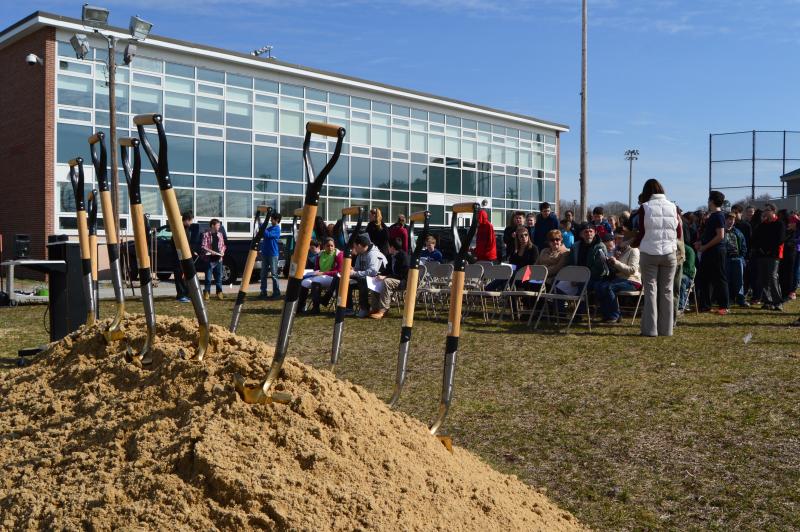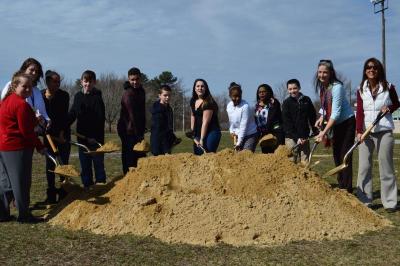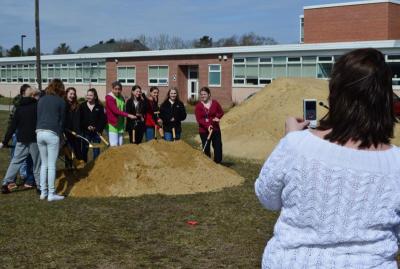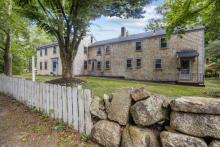Wareham Middle School breaks ground on cranberry bog
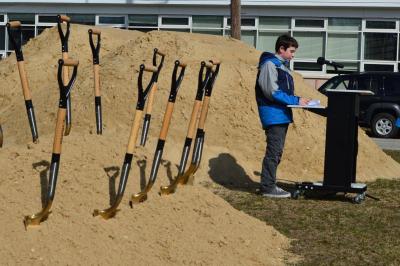
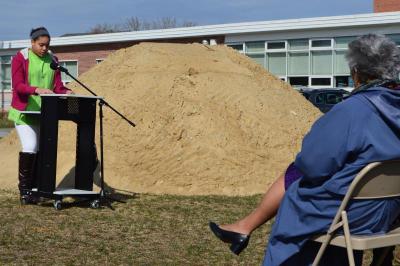
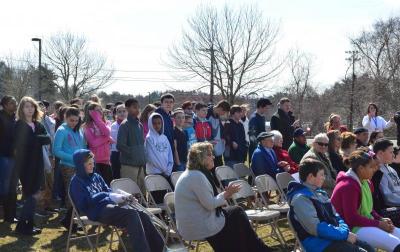
Cranberry bogs have always been a part of Wareham's geography and economy, but there's never been one at a school, until now.
A groundbreaking ceremony was held on Wednesday morning in celebration of a new cranberry bog and outdoor classroom at Wareham Middle School. The project is the result of a more than two-year effort to launch the school’s cross-curriculum STEAM Academy program, which focuses on science, technology, engineering, arts and humanities, and math.
“We’ve been planning this for awhile now,” said Khai Delgado, a student who introduced speakers during the ceremony. “We’ve been learning a lot in every class.”
The Academy takes more than 80 students from their typical classroom situations to focus on lessons and projects that bridge multiple disciplines. Cranberry production is one of the focuses for the first-year STEAM Academy students.
During the next couple of months, students will build the bog, which is located behind the middle school, in stages. This includes removing the top layer of grass, digging down about 8 inches and layering the hole with clay, timbers, peat and sand.
“Students will plant the bog by hand,” said technology teacher and STEAM co-creator Julie Walker. “The bulk of the work will be done in the next two weeks.”
The school plans to construct two small micro-bogs this year with a third scheduled for next year. Each bog will be roughly a tenth of an acre in length and feature their own vine types: an old variety dating back to glaciation, one from the past 50 years and the third plot will contain a hybrid.
Comparing the different yields, plant life cycles and costs of production from each field will be part of the cross-curriculum lesson plan.
The project came together with the guidance of the Cranberry Educational Foundation, including the foundation’s chairman, Peter Beaton.
“Cranberries are an acid-loving plant — they have to be close to the ground,” said Beaton. He added that the plants need to have a lot of water to survive, but the berries cannot grow directly in water like rice. The layers of clay, peat and sand act as a sponge, providing the crops with nutrients.
The project itself took about a year’s worth of planning, and when it's completed, the space will be used as an outdoor classroom. A tennis court has been proposed to fill out the rest of the space.
Constructing the bogs is just one project the STEAM Academy is tackling this year. Students will be working on an “eco product” project, where they will design a new eco-friendly product that they’ll see through from the brainstorming phase to pitching their designs.
“We get to do more than other classes can do because we have more technology," said Middle School student Andrew Brightman. “It’s a good time.”



